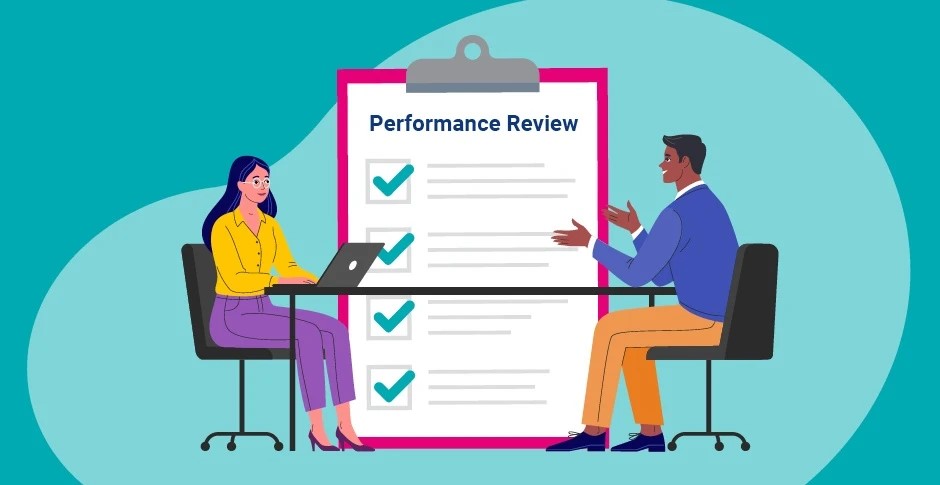Evaluating staff performance is an essential process for businesses aiming to achieve operational efficiency and foster employee development. Regular performance evaluations allow managers to assess employee contributions, identify strengths, and address areas requiring improvement. Through consistent feedback and evaluation, companies can help employees grow professionally while ensuring that the organization meets its goals. Evaluating staff performance is not only about assessing individual productivity but also about aligning the team’s efforts with the company’s strategic objectives.
When it comes to evaluating staff performance, businesses must adopt a structured approach that promotes fairness, transparency, and ongoing improvement. Without a well-defined performance evaluation process, companies risk underperforming employees, low morale, and reduced productivity. More importantly, performance evaluations offer a chance to recognize top performers, boosting employee engagement and retention. With the right systems in place, evaluating staff performance can lead to positive outcomes for both employees and the business.
The Importance of Evaluating Staff Performance
One of the primary reasons for evaluating staff performance is to ensure that employees are working toward the company’s goals. Regular assessments give managers the opportunity to track progress, offer constructive feedback, and adjust expectations as needed. Employees who understand their performance metrics and receive actionable feedback are more likely to stay engaged and motivated. Evaluating staff performance also helps companies identify training needs, enabling managers to provide tailored professional development opportunities.
In addition to improving employee performance, regular evaluations also foster accountability. When employees know they will be assessed on their work, they tend to take ownership of their tasks and responsibilities. This can lead to higher productivity, better decision-making, and increased overall efficiency. Performance evaluations also provide documentation, which can be useful when making decisions about promotions, salary increases, or even disciplinary actions.
Another important aspect of evaluating staff performance is improving communication between employees and managers. Performance reviews create a platform for open dialogue, where both parties can share feedback, concerns, and expectations. By promoting regular communication, performance evaluations reduce misunderstandings, clarify job roles, and help build stronger manager-employee relationships.
Setting Clear Performance Metrics
A critical component of evaluating staff performance is establishing clear and measurable performance metrics. To effectively evaluate employees, businesses must define specific goals and expectations. These metrics should align with both individual roles and the broader company objectives. Employees need to know exactly what is expected of them in terms of quality, productivity, and teamwork. Without clear performance metrics, evaluations can become subjective, leading to frustration or confusion.
Many businesses use the SMART framework to set performance goals. SMART stands for Specific, Measurable, Achievable, Relevant, and Time-bound. This method ensures that employees have well-defined targets to work toward, which makes the evaluation process more objective and fair. For example, instead of simply stating that an employee needs to “improve sales,” a SMART goal would specify increasing monthly sales by 10% over the next six months.
Once performance metrics are in place, managers should provide regular feedback to employees, ensuring that they are on track to meet their goals. Waiting for an annual review to provide feedback can limit employee growth and leave issues unaddressed. By offering continuous feedback, companies create an environment of growth and learning, making performance evaluations more effective.
Tools for Effective Performance Evaluation
In today’s business landscape, many organizations rely on software tools to help with evaluating staff performance. Performance management systems streamline the evaluation process by tracking key metrics, providing feedback forms, and generating reports. These tools allow managers to document employee performance consistently and review historical data for a more accurate assessment. Digital tools also enable real-time feedback, ensuring that employees receive timely input on their work.
In addition to performance management software, many companies use self-assessments as part of the evaluation process. Self-assessments encourage employees to reflect on their own performance, identify areas of strength, and acknowledge areas for improvement. This fosters a culture of accountability and helps employees take ownership of their professional development. When combined with manager evaluations, self-assessments provide a more comprehensive view of employee performance.
Another tool used in evaluating staff performance is the 360-degree feedback method. This approach gathers feedback from multiple sources, including peers, direct reports, and supervisors. The 360-degree feedback method offers a well-rounded assessment of employee performance, focusing on interpersonal skills, leadership qualities, and teamwork. While it can be time-consuming, this approach ensures that evaluations are fair and consider different perspectives.
Overcoming Common Challenges in Performance Evaluations
Despite the benefits of evaluating staff performance, businesses may encounter challenges when implementing performance reviews. One common issue is bias, which can affect the objectivity of evaluations. Personal relationships, favoritism, or preconceived notions can influence how managers assess their employees. To overcome this, businesses should provide training on how to conduct unbiased performance evaluations. Using clear performance metrics and standardized evaluation criteria can also help minimize bias.
Another challenge in evaluating staff performance is the “recency effect,” where managers focus too much on recent events rather than the employee’s overall performance. To avoid this, managers should keep regular notes throughout the year and track key accomplishments and challenges. Performance management tools can assist in documenting these details, ensuring that evaluations reflect the employee’s contributions over time.
Employees may also experience anxiety around performance evaluations, especially if the process lacks transparency. To reduce this stress, companies should clearly communicate the evaluation process, set expectations early, and offer constructive feedback during the review. Focusing on both strengths and areas for improvement creates a balanced evaluation and promotes a culture of development rather than fear.
The Role of Evaluations in Employee Development
Evaluating staff performance plays a significant role in employee development. Through regular performance reviews, businesses can identify employees’ strengths and weaknesses and offer targeted training or mentorship. By aligning employee development plans with performance evaluations, companies ensure that their workforce remains competitive and capable of meeting future challenges.
Incorporating development goals into performance evaluations also encourages employees to take initiative in their own growth. Managers can work with employees to set personal development objectives, such as improving a specific skill or taking on new responsibilities. This approach not only benefits the employee but also strengthens the company by building a more skilled and versatile workforce.
Moreover, regular performance evaluations help companies identify potential leaders within the organization. By recognizing high performers and investing in their development, businesses can build a pipeline of future leaders. Succession planning becomes more effective when companies have a clear understanding of their employees’ strengths, allowing them to promote from within.
Maximizing the Impact of Performance Evaluations
Evaluating staff performance is essential for driving employee growth, enhancing productivity, and aligning team efforts with business goals. By setting clear performance metrics, providing continuous feedback, and using effective tools, companies can create a fair and transparent evaluation process. Overcoming common challenges, such as bias and lack of transparency, ensures that performance reviews lead to positive outcomes.
Ultimately, evaluating staff performance is about more than just measuring productivity—it’s a tool for fostering employee development, improving communication, and building a stronger organization. By prioritizing effective performance evaluations, companies can enhance employee engagement, boost morale, and achieve long-term success.


